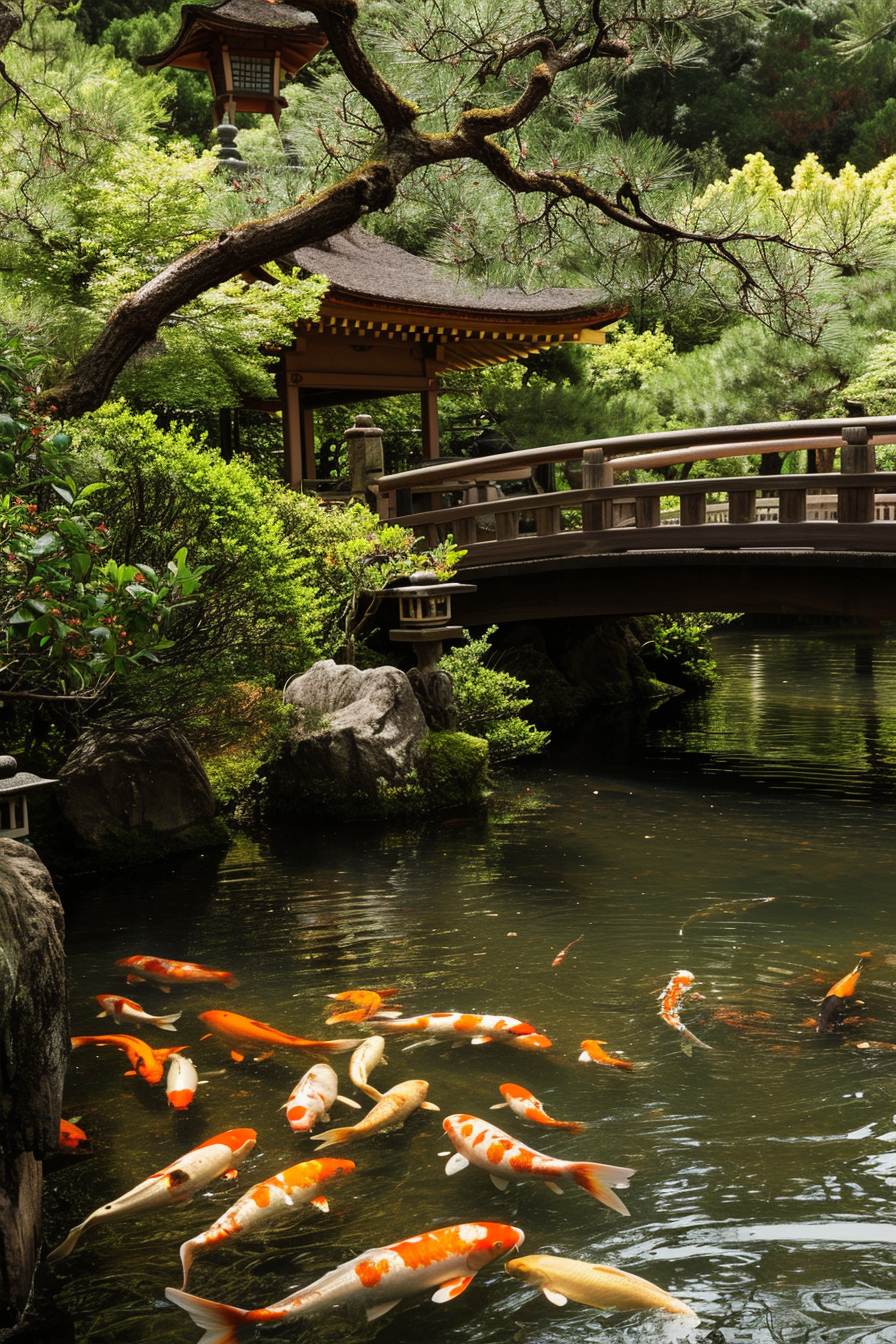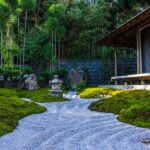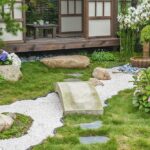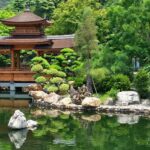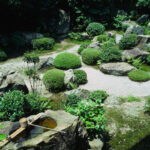Japanese garden design is a traditional art form that dates back to the 6th century, when Japanese nobility began creating highly stylized landscapes for their homes. These gardens, known as “nihon teien” in Japanese, are designed to evoke the natural beauty of the Japanese landscape and often feature elements such as water, rocks, and carefully pruned trees and shrubs.
One of the key principles of Japanese garden design is the concept of “wabi-sabi,” which emphasizes the beauty of imperfection and transience. This principle is reflected in the use of natural materials such as weathered rocks and moss-covered stones, and in the practice of allowing plants to grow and change over time.
Another important aspect of Japanese garden design is the use of symbolism and metaphor. Rocks and boulders are often placed in the garden to represent mountains and islands, while water features such as ponds and streams symbolize the flow of life and the passage of time. Lanterns, bridges, and other structures are also frequently used to create focal points and add a sense of balance and harmony to the garden.
In addition to these symbolic elements, Japanese garden design also emphasizes the use of empty space to create a sense of tranquility and serenity. This concept, known as “ma,” is considered essential to the overall design of the garden and allows for contemplation and reflection.
One of the most iconic features of Japanese garden design is the use of carefully cultivated plants and trees, including bonsai, bamboo, and Japanese maple trees. These plants are often pruned and trained to create sculptural shapes and patterns, adding another layer of beauty and complexity to the overall design.
Overall, Japanese garden design is a highly sophisticated art form that seeks to capture the essence of nature and create a peaceful and harmonious environment for contemplation and meditation. By incorporating elements of symbolism, natural beauty, and tranquility, Japanese gardens continue to inspire and delight visitors around the world.
